10 Neat Things About Eggplants

1. Madde apple, apple of insanity.
These are just two of the terms used to describe eggplant over time, perhaps because, according to Wikipedia, the undercooked seeds of the wild plant are said to have psychotropic properties. They also contain low amounts of nicotine – not much. It would take about 20 pounds of eggplant to equal the hit delivered by one cigarette.

2. Solanum melongena.
The botanical name for this nightshade family plant seems to ring with a certain Italian music, maybe because it is so highly prized there. The British call it aubergine, supposedly from the French alberge for peach-like; in Inda, where it orginated, South Africa, and other widely scattered countries, it is called brinjal. Other fanciful names include thorn apple, bitter apples, bitterball, garden egg and Guinea squash.
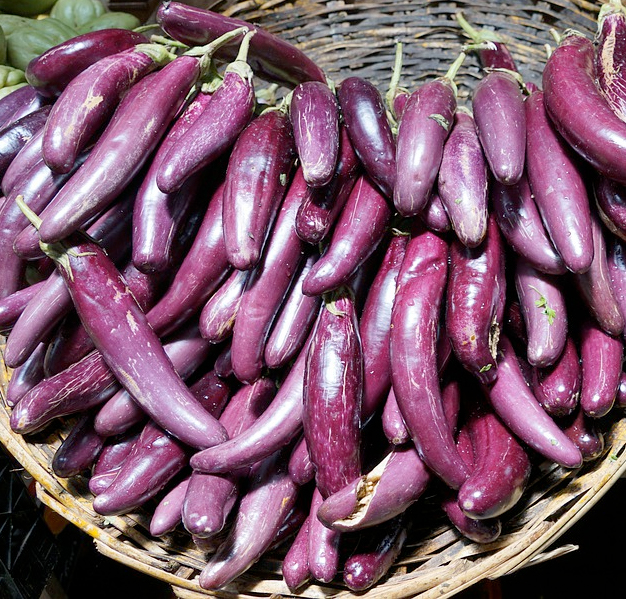
3. Dyeing for China dolls.
Although in wide use for millennia, eggplant has been traced back to 544 A.D. in China where it was written about in an ancient Chinese treatise. It was used by fashion conscious Chinese women to polish their teeth to a gleaming, metallic black! A Japanese proverb claimed that “the happiest omen for a New Year is first Mount Fuji, then the falcon, and lastly eggplant.” It is also known as the king of vegetables.
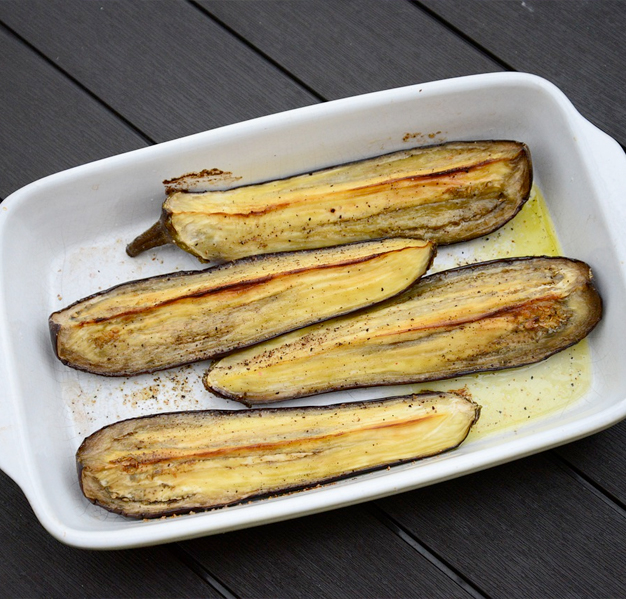
4. Why all the excitement?
It’s not that eggplant delivers a particular wallop in any one nutritional category, although it does have a lot of the B vitamins, a decent amount of manganese and some copper, but what it does have is a very wide array of nutrients in varying amounts. As a bulking agent in the diet, it produces a feeling of being full even though one cup of raw eggplant contains only 20 calories. It is also touted as being a cholesterol-lowering food. Within the anthocyanins in black-skinned varieties is a potent antioxidant that is known to protect brain cell membranes from damage.
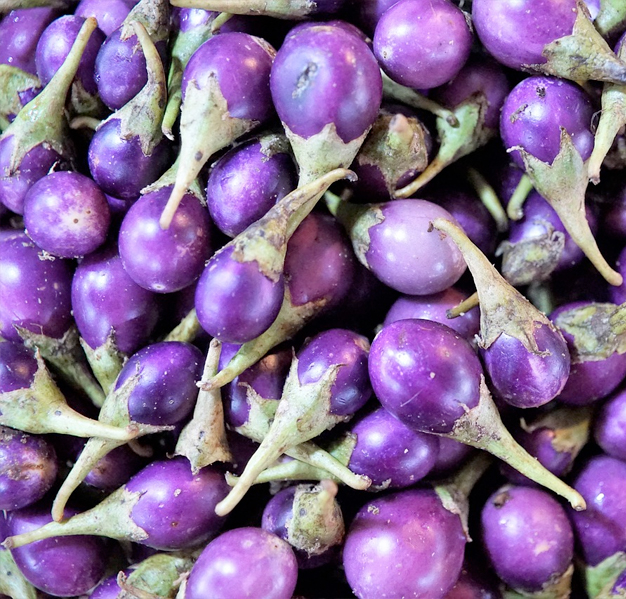
5. Berry interesting.
Eggplant, like its cousin the tomato, is a fruit. It carries its seeds dispersed throughout its flesh and so is technically a berry. As some people point out, “Knowledge is knowing that eggplant is a fruit; wisdom is not using it to make a fruit salad.”

6. A many splendored thing.
Here in North America, we see eggplants as a largish, swollen purple thing with a shape somewhat like a teardrop. Around the world this fruit can be many shapes, from round to oval, to long and slender, to segmented like a heritage tomato, and coming in many different sizes. Colours vary just as much. Some are white, some yellow or orange. Many long skinny ones are green. Some are striped, some are almost black, some have wrinkled skin like a bitter melon. They also come in every size from small, white and egg-shaped (hence the name) to the large varieties we often see at the supermarket.
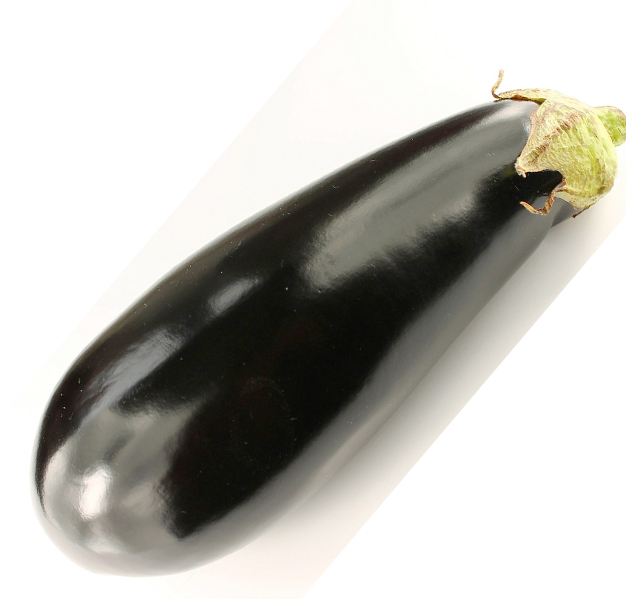
7. Pick perfection.
When shopping for eggplant, look for glossy, unbruised fruit that is heavy and has a bright green stem and blossom end. If it is fresh, the flesh will spring back from a thumbprint. Do not buy waxed fruit. It is sensitive to heat and cold, so store at about 10 C and do not store cut fruit as it goes bad quickly (cut pieces will oxidize and turn brown). Do not wash before storing. Cut using stainless steel. It will turn carbon steel black.
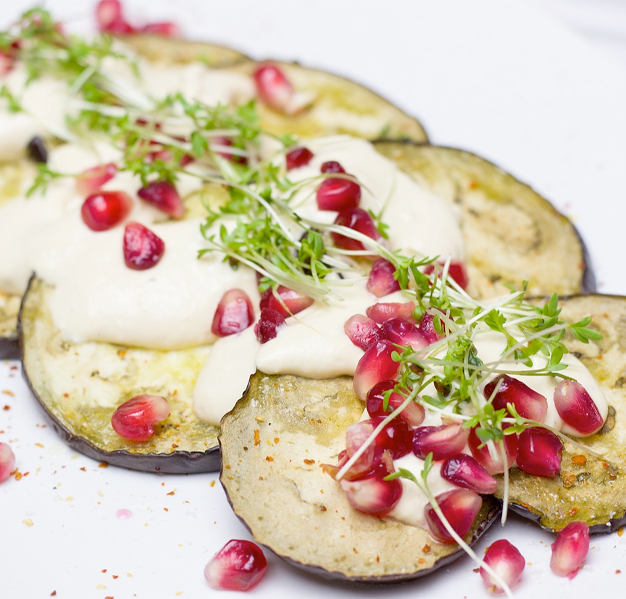
8. Salt treatment.
Eggplant can be a little bitter, especially the seeds. One way to deal with this is to salt the slices and let them sit for about 30 minutes. They can then be rinsed to remove the salt. This also has the effect of making them less permeable to fat if you decide on frying as the cooking method.
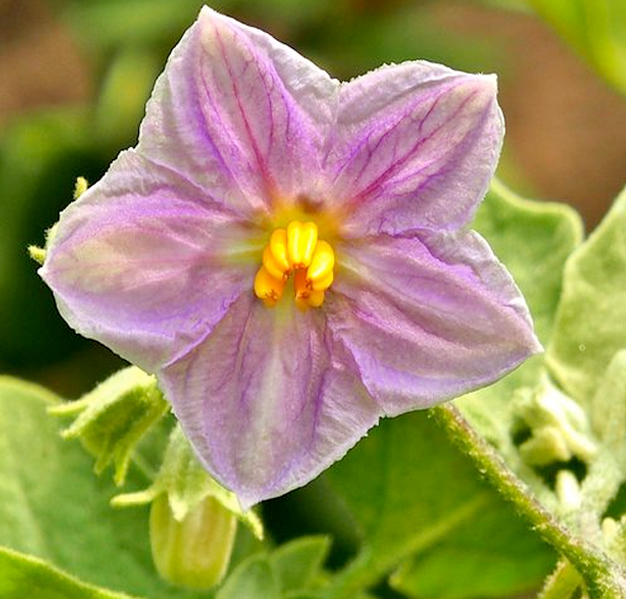
9. Growing your own.
Start eggplant seeds eight weeks before planting them out, after which the eggplant will take another 60 to 70 days to ripen. Flowers are star-shaped, white to purple in colour. Eggplants are susceptible to potato beetles, flea beetles, aphids and spider mites. The plant is also vulnerable to verticillium fungal disease.
10. The good and the bad.
Juice from eggplant roots was used to treat throat and stomach issues, coughs, rheumatism and toothaches. Counter-intuitively, eggplant extract was also used to treat asthma and skin problems although about 10 per cent of the population develops allergy symptoms when exposed to eggplant, which is high in histamines.
First Edition: June 17, 2021

Weeding: Pull less, grow more

Ken Macdonald’s vertical tomato garden in Regina

Get digging! 10 neat things about planting tools
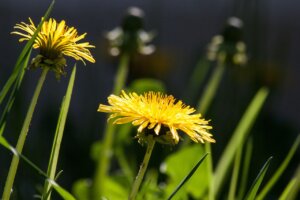
DYC Dazzle: Meet the stars of the yellow composite world

Stakes and trellises deserve praise: 10 Neat Things






